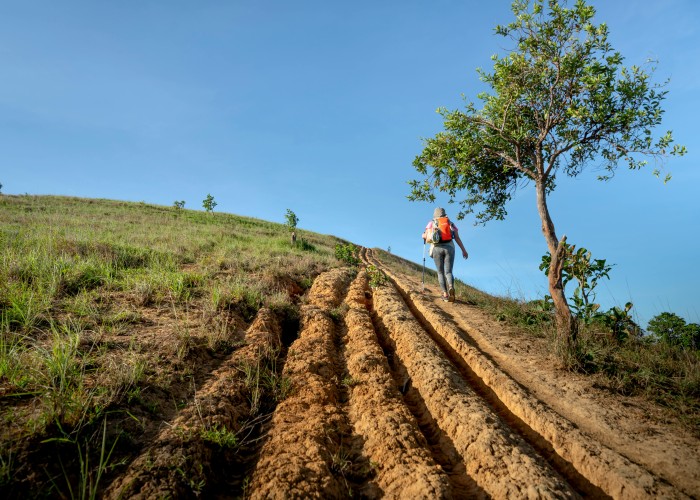The Haute Route from Chamonix to Zermatt is one of the most iconic high‑altitude treks in the Alps. If you dream of glacier passes, jagged peaks, and that moment when the Matterhorn comes into view, this guide is for you. With clear advice aimed at readers from the USA, UK, Australia, and Germany, this post offers a neutral, helpful overview—no hype, just practical insight. Haute Route Trek.
Overview
The Haute Route spans approximately 100 kilometers, crossing mountain passes that link Chamonix in France with Zermatt in Switzerland. This trek is celebrated for its sweeping alpine scenery, glacial landscapes, and ever‑changing terrain. It’s a classic among mountaineers and trekkers alike because it combines physical challenge with stunning vistas—think snowfields, mountain huts, and panoramic ridgelines.
Best Time to Visit
Choosing the right season is key:
- Mid‑June to early September is traditionally the most reliable window.
- Snow has melted from most passes.
- Mountain huts are open.
- Weather is generally stable, though still highly variable.
- Late June to July offers long daylight and sturdy footing on glaciers.
- August to early September brings wildflowers and thinner crowds.
- Outside this window, expect snow, route-finding, and greatly increased difficulty.
How to Reach
Getting to the starting and ending points involves multiple transit options:
- Air: Fly into Geneva or Zurich.
- Train: Rail links bring you to Chamonix via France and to Zermatt via the Swiss rail network.
- Road: Mountain roads access Chamonix easily. Zermatt is car-free; visit via train from nearby Täsch.
- Shuttle or Bus: Local shuttle services connect airports or cities to trailheads in summer.
Entry Fees and Permits
No formal permits are required for the Haute Route. However, note:
- Mountain hut stays are often reserved and may come at a modest price—subject to change.
- Some remote areas may request small trail maintenance contributions.
- Always have cash on hand for huts that do not accept cards.
Food Availability and Meal Options
Meal options along the route typically include:
- Mountain huts offering hearty breakfasts, packed lunches, and warm dinners.
- Snack options like energy bars or local specialties may be available.
- Self‑catering is possible, but carrying enough provisions will affect pack weight.
- Food schedules vary—dinging hours may be limited, so plan your timing.
Packing List and Essentials
Focus on comfort, safety, and lightness:
- Layered clothing and waterproof outer shell.
- Sturdy hiking boots and gaiters.
- Glacier travel gear if crossing snowy passes (check seasonal conditions).
- Map, compass, or reliable navigation device.
- Water bottle and purification system.
- Headlamp, snacks, and energy sources.
- First‑aid kit and blister supplies.
- Optional: trekking poles for stability.
Safety Tips and Local Regulations
Safety comes first:
- Check weather daily. Mountain storms can appear quickly.
- Stick to marked trails. This protects both you and the delicate environment.
- Inform someone about your route and expected arrival.
- Use crampons or ice axe if snow remains on passages—don’t assume firm ground.
- Altitude awareness: moderate elevation gain requires acclimation. Take your time.
Local rules may restrict camping near huts or vulnerable ecosystems—respect any local signage. Haute Route Trek.
Tips for Beginners or First-Time Visitors
- Train for elevation and distance before departure.
- Break up stages over 6 to 10 days depending on pace.
- Pre‑book huts or lodging, especially in July and August.
- Use sections of the trail to assess fitness and gear before committing fully.
- If possible, trek with someone familiar with alpine terrain.
Local Customs and Cultural Etiquette
Even amid remote peaks, a few customs matter:
- Greet hut wardens or fellow hikers courteously.
- Keep noise low during quiet hours in huts.
- Share facilities like common rooms or kitchens respectfully.
- Carry out all waste—leave no trace for future hikers. Haute Route Trek.
Frequently Asked Questions (FAQs)
Q: How long does the Haute Route take?
A: Most hikers complete it in 6 to 10 days, depending on pace and route variations.
Q: What is the difficulty level?
A: Moderate to challenging. Requires comfort with elevation, rough terrain, and possibly snow.
Q: Highest altitude reached?
A: Around 3,300 meters on glacier passes, depending on route variant.
Q: Are restrooms available?
A: Yes, primarily at mountain huts. In remote areas, bring sanitation supplies.
Q: Is navigation difficult?
A: Trails are generally marked, but whiteout or snowfields make navigation tricky—bring a map or GPS backup.
Q: Do I need cash on the trek?
A: Yes, many huts prefer cash for food or shelter.
Q: Do I need mountaineering gear?
A: Depends on snow conditions. In summer, crampons may still be needed.
Final Thoughts
The Haute Route from Chamonix to Zermatt weaves through some of the most spectacular landscapes the Alps have to offer. With thoughtful preparation, right-season timing, and respect for mountain conditions and etiquette, this trek can be both rewarding and accessible. Let the views guide you—and happy hiking. Haute Route Trek.






Leave a Reply